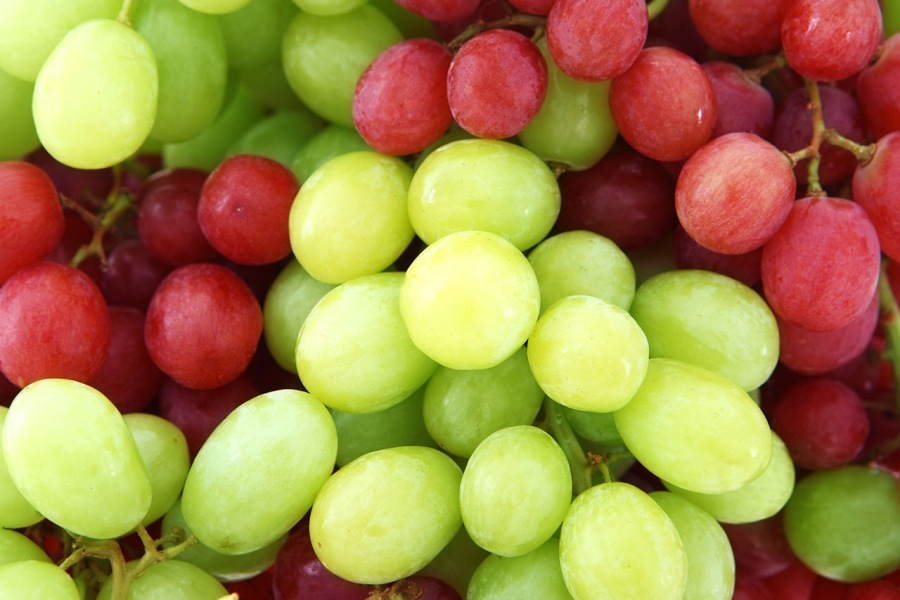Fresh Produce Trends with Peru & Chile, by Bill Stankiewicz, Supply Chain Executive


A top category in fruit sales, grapes are a staple in produce departments across the United States. Grapes have a great convenience factor for many stores and something that consumers love because they don’t take a lot of time to prepare and serve, something retailers appreciate because they don’t require value-adds before putting them on shelves.
So what does it take to get the items that we all love from grower to table? At the moment, it involves an understanding of a complex system: finding the best varieties from the right growing areas and striking a balance between domestic and imported varieties.

Current grape import market update
The majority of grapes consumed in the United States during the winter months are imported from South America. That’s why, when we talk about grapes this time of year, we also need to talk about imports.
Historically, Chile ruled the South American grape market and in terms of volume, it still does, however, over the course of the last 5 plus years Peru has become a more prominent seedless option for North America. The climate in Peru allows for the growers to “time out” their crop in order to fill the gap between California and Chile. Having said that, we are seeing overlap between the two and expect the overlap to continue as Peru grows in overall volume.
The last Peruvian season had some issues around decreased yields associated with growing conditions and lack of irrigation in comparison to preseason expectations. With that said, the available seedless volume increased again this season as growers continued to add seedless acreage and reduced seeded (Red Globe) acreage. Grape shipments from Peru to the United States are up by over 20 percent this season as compared to last season, with the additional volume driven by the new seedless acreage. In Chile, we have seen two climatic conditions affect the grape crop so far this season: temperature and rain. Temperatures this spring and early summer in Chile were above average, which resulted in most of the fruit crops in Chile, grapes included, being about two weeks earlier than normal.
The grape volume shipped to the United States is up by over 75% compared to last season. This drastic change in volume is largely attributed to the fact that the previous season was nearly two weeks late, causing nearly a month difference in shipping. Grapes are being harvested much earlier than normal out of Northern Chile, so there is a chance that we will see production slow down as we move from one growing region to the next. We also could see an earlier end to the season, causing a larger than normal supply gap between import supply and Mexico/domestic supply in May.
Chile has seen two major rain events so far this growing season and both have affected most of the growing regions, except the very far north (Copiapo). Moisture added onto developed grapes is not good for the condition of the fruit. Growers are still assessing potential damage, but we do need to keep a close eye on the Flame and Sugraones varieties, which were closest to full maturity when the rain hit.
Number of grape varieties is growing
Over the last 10 years, we have seen a large expansion in new varieties of grapes being offered to consumers. Most of the new variety introduction has occurred in California, where the growing community is aggressive with introducing new varieties to meet consumer demand.
Growers in South America are taking note in the changing consumer demands across the globe as well. Chile has sent more than 10 different varieties so far this season and Peru has sent more than 20 seedless varieties to the United States this season. Because of Peru’s unique climate they can get their first commercial harvest in as little as fourteen months after planting, comparing that to California and Chile which tend to take 2-3 years to get the first commercial harvest, which gives Peru a competitive advantage in terms of speed to market.
There are a few things to consider when selecting which varieties to plant in South America in comparison to California.
- New varieties that have worked well in California have not all had the same results in South America. While growing conditions are similar in those regions, they are not identical; those slight variations in the climate can affect the growth.
- In general, the new varieties introduced in California have extended the growing season. In Chile, they do not need to extend the season for supply to the US as the U.S. Government has established a “marketing order of April 10.” This basically curtails seedless grape shipments into the United States from South America, clearing the way for new crop supplies from Mexico and Southern California.
- To be successful with new varieties, Chile will need to develop a grape that they can harvest early, is less susceptible to splitting, have a better yield, and replace older, less requested varieties. Equally important in Chile is the continued work to find a green grape variety that can be harvested late that can withstand the changing weather conditions.
Peru vs. Chile: A balanced approach
Peru is still fairly new to the U.S. marketplace with seedless grapes. However, the country’s seedless production is growing very quickly; by all accounts, that growth will continue to build for years to come. I see Peru as not only a legitimate supply bridge between the end of California’s season and the beginning of volume from Chile, but also as a future powerhouse in the grape industry.
As a comparison, Peru has sent roughly 7.5 million seedless grapes to the United States this year, while Chile has sent nearly 9.5 million and still have three more months of shipping remaining. There are some distinct advantage to both regions, with Chile having such established supply and Peru’s ability to be nimble when reacting to changing consumer produce trends, so it is important for us to have a balanced supply out of both countries to match our customers’ needs throughout the winter months.
Parts of the information is from an article from Andy Kampa, Category Manager for Robinson Fresh.
Thank you for reading,
Bill Stankiewicz
Supply Chain Executive
Phone: 1.404.750.3200
Email: bstankiewicz@portfreshlogistics.com
"""
Articles from Bill Stankiewicz
View blog
Hello Bees: · Yes in the rapidly-evolving logistics market of 2019, cold is the new hot. That might ...

Japan is the sixth-largest exporter market for Georgia. In 2020, Georgia's exports to Japan totaled ...

Hello to all Bee's, · As a member here, I do love reading the many posts that are shared from beBee ...
You may be interested in these jobs
-

Production Associate
1 day ago
Direct apply
Cintas Chicago, United States**Requisition Number**: 170689 · Cintas is seeking a Production Associate - Utility III to support the Rental Division. This position is responsible for performing a variety of production jobs as directed by the shift supervisor. The tasks for this position may include hanging or ...
-
Lending Operations Reconciliation Team
2 days ago
00002 Citibank, N.A. New Castle, United States Full timeThe Lending Operations Reconciliation Intmd Assoc Analyst is a developing professional role which integrates in-depth specialty knowledge with a solid understanding of industry standards and practices; demonstrates good understanding of how the team and area integrate with others ...
-

Downstream SR Account Manager
13 hours ago
Insight Global Westlake, United StatesInsight Global is looking for a Sr Account Manager for an International Oil and Gas services company located and headquartered in Houston. This person will be responsible for a portfolio of about 15 clients within the Downstream Power space and will have about 30% travel annually ...

Comments